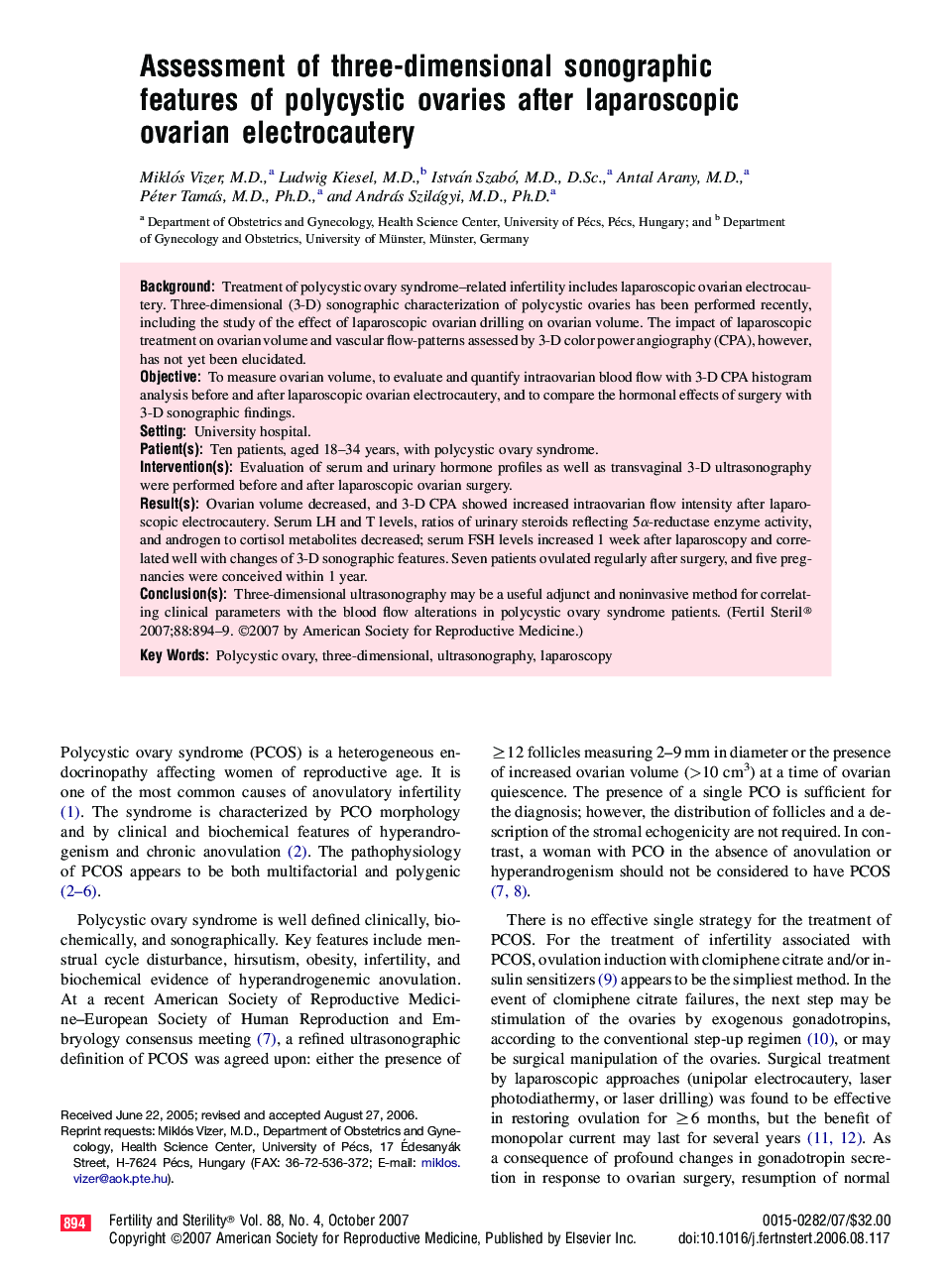| Article ID | Journal | Published Year | Pages | File Type |
|---|---|---|---|---|
| 3935418 | Fertility and Sterility | 2007 | 6 Pages |
BackgroundTreatment of polycystic ovary syndrome–related infertility includes laparoscopic ovarian electrocautery. Three-dimensional (3-D) sonographic characterization of polycystic ovaries has been performed recently, including the study of the effect of laparoscopic ovarian drilling on ovarian volume. The impact of laparoscopic treatment on ovarian volume and vascular flow-patterns assessed by 3-D color power angiography (CPA), however, has not yet been elucidated.ObjectiveTo measure ovarian volume, to evaluate and quantify intraovarian blood flow with 3-D CPA histogram analysis before and after laparoscopic ovarian electrocautery, and to compare the hormonal effects of surgery with 3-D sonographic findings.SettingUniversity hospital.Patient(s)Ten patients, aged 18–34 years, with polycystic ovary syndrome.Intervention(s)Evaluation of serum and urinary hormone profiles as well as transvaginal 3-D ultrasonography were performed before and after laparoscopic ovarian surgery.Result(s)Ovarian volume decreased, and 3-D CPA showed increased intraovarian flow intensity after laparoscopic electrocautery. Serum LH and T levels, ratios of urinary steroids reflecting 5α-reductase enzyme activity, and androgen to cortisol metabolites decreased; serum FSH levels increased 1 week after laparoscopy and correlated well with changes of 3-D sonographic features. Seven patients ovulated regularly after surgery, and five pregnancies were conceived within 1 year.Conclusion(s)Three-dimensional ultrasonography may be a useful adjunct and noninvasive method for correlating clinical parameters with the blood flow alterations in polycystic ovary syndrome patients.
